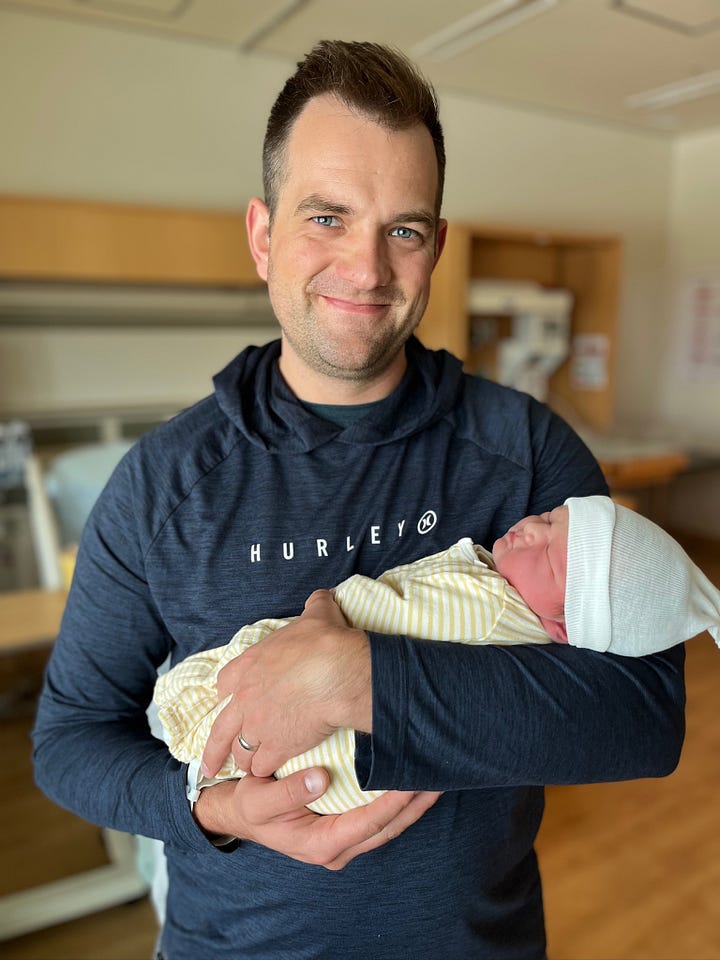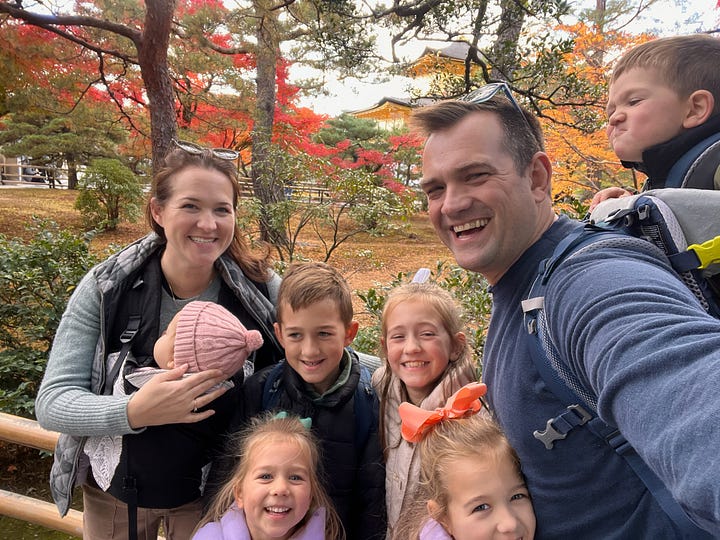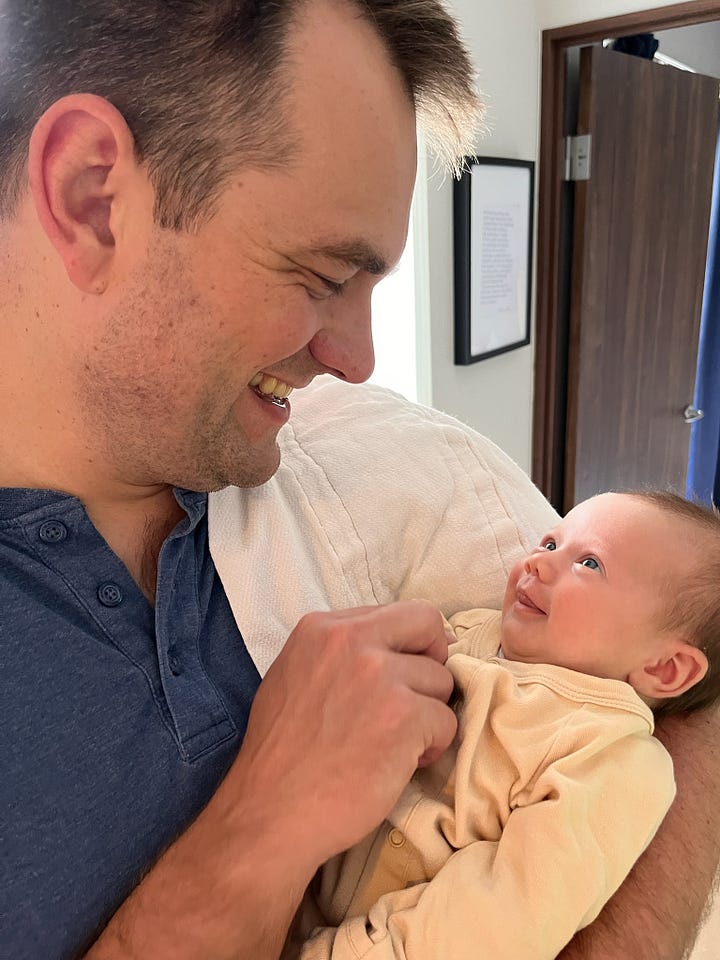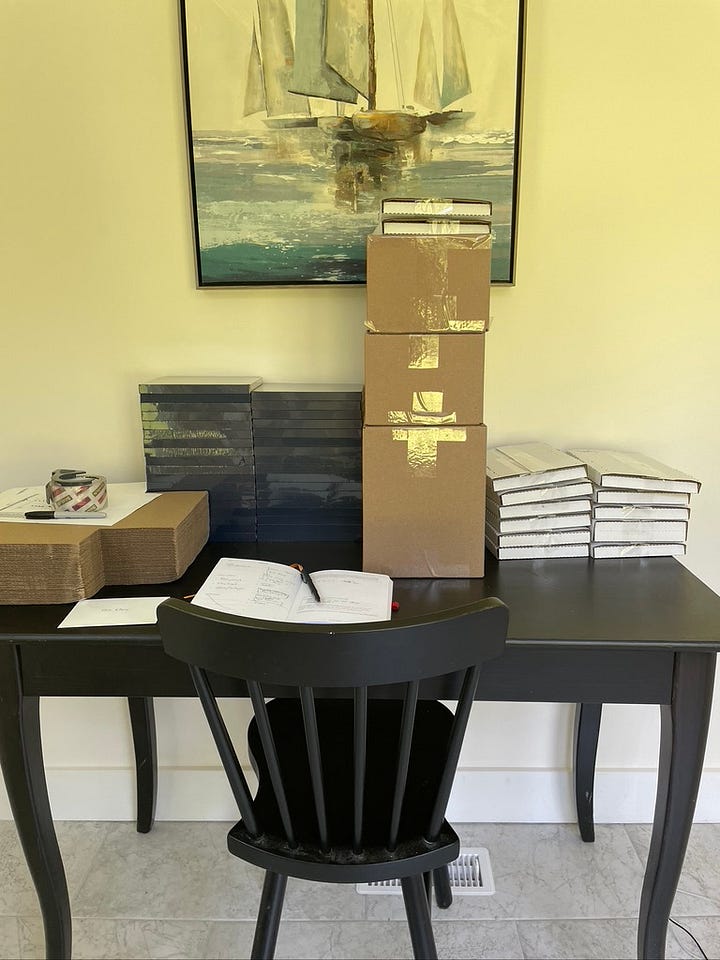18 Months
In February of 2024 I wrote the last post of this little newsletter, expecting to write another the next month. Here we are 18 months later. I wrote zilch.
The past 18 months have been delightful though! Some of the highlights:
In January of 2024, we welcomed our 6th child, a baby girl named Gianna. She’s beautiful and very funny.
I coached entrepreneurs in a profitability program I designed. We had great success together.
I got to go deep sea fishing, something I’ve dreamed about for years, with our oldest for his 10th birthday. We caught some huge fish!
We traveled back to the states from Japan for my brother’s wedding and spent some amazing weeks with family.
We traveled to Kyoto (again). That city is magical.
In May of 2025 our 7th baby was born. Another beautiful girl! She’s named Mary. God is good! And surprising!




Gianna. Fish bigger than my kids. Kyoto in the Fall. Mary
We also had our challenges of course, most of them around my wife’s many temporary duty assignments (TDY). She travels at least 4 times a year for 2 week stints to work at other hospitals in the Pacific. It’s always tough, but you need the salt with the sweet. Otherwise you forget how sweet you have it.
Because of her role in the Navy, my primary job for the last 3 years has been as “Dad.” I’m an entrepreneur second.
If you’re a parent, you’ll know that it takes a lot of work to run a family well, even when both parents are home. That work goes up when you live 7,000 miles from family and need to run the show solo for 8 weeks a year. So when we moved to Japan, we made the decision that I would hold down the fort first, and work on CappaWork where it fit in. I needed to be able to drop my work for a few weeks at a time and pick it back up when things settled out.
Some of that work has been product sales of the CappaWork Planner. Some of it has been 1-on-1 coaching for entrepreneurs. Recently my time has been spent building software using AI.
CappaWork Planner Retirement
This week though, I’m retiring the CappaWork Planner.
The CappaWork Planner is a good product. It was my first real product. Nearly 500 copies have been sold to hundreds of different customers from across North America. I don’t know most of them personally. Some people became power users and bought again, and again, and again. I still use it almost daily. In all those cases, it’s a success!


However, The CappaWork Planner is not profitable*. That’s a huge deal.
There are certainly cases where you can have a product that is not profitable (Costco rotisserie chickens) but they always play a part in a series of products. If it’s your only product that’s a problem that can’t be ignored.
As a part of my coaching with entrepreneurs, we worked on the most important metric for any product, the LTV/CAC ratio. I learned that this the hard way, by not paying attention to it and getting surprised by cashflow. Briefly here’s how the ratio works:
LTV - Long Term Value of a customer - the average of how much a single customer would pay your business for the length of time that they’re a customer.
CAC - Customer Acquisition Cost - how much it costs you to find and serve a new customer. This can be on ads, agency costs, influencer posts etc.
Nearly all of the internet says that “if you get LTV/CAC to be 3:1, you’re golden.” Even Harvard Business School says that.
That is wrong.
If you are building without outside capital, the ratio needs to be closer to 10:1. And ideally you should be profitable on your first transaction. The customer should pay off all the spend required to find that customer on their very first purchase. This produces a healthy cashflow and is the difference of staying in business or going under.
The last inventory of the CappaWork Planner is nearly gone. (There are only 18 left, so if you want one, be quick.) Before purchasing more inventory, I took my own advice and looked critically at the LTV/CAC ratio of the Planner. For a variety of boring reasons, it’s closer to 3 than 10. So it’s time to retire the product line.
To the CappaWork Planner - I say well done!
You didn’t get anyone Instagram famous, or become a 7 figure business. But you did help quite a few people work more consistently, with more gratitude and help them remember that God is good. I especially have benefitted. That’s good work.
If the only product of CappaWork is being shut down, does that mean CappaWork as a company is done?
No. Just shifting focus.
A pivot away from physical products toward digital ones. More to come on that next week…
Benediction
“He got into one of the boats, the one belonging to Simon, and asked him to putout a little from shore. Then he sat down and taught the people from the boat. When he had finished speaking, he said to Simon, “Put out into deep water, and let down the nets for a catch.”
Luke 5: 3-4
This verse is repeated on every weekly planning page in the planner. Some customers thought it was a mistake, an accidental reprint. But I included it every week to serve as encouragement to heed your calling.
Immediately after these verses Simon rows out, lets down his nets and pulls in a literally unbelievable haul of fish. Then Jesus changes his name to Peter and calls him to be a fisher of men.
When our names are changed, we get a new calling.
My calling right now is “Dad”. The CappaWork Planner did not go viral. It cost me time and money. But it has continually reminded me of my calling, my main job in life.
For that I am grateful.
Until soon,
Nate
*Profitability depends on 4 major things. Customers, Average Order Value, Frequency and Margin. There are ways to increase each of these variables, but the most important for small businesses is Customers. If you can attract or find customers at scale, and increase inventory order size, per-item costs go down, which brings margin up, and dramatically impacts profitability. But, there is a chicken/egg problem for early stage entrepreneurs. Can you attract enough customers to get to the stage where investing in inventory makes sense?


